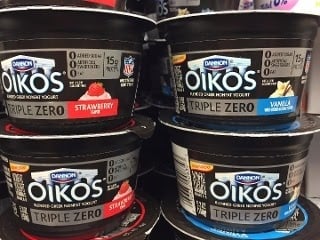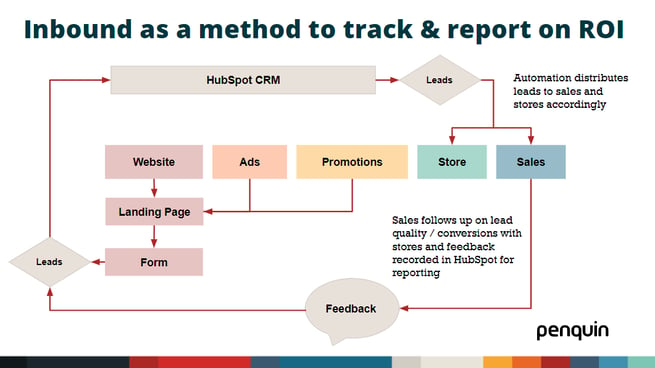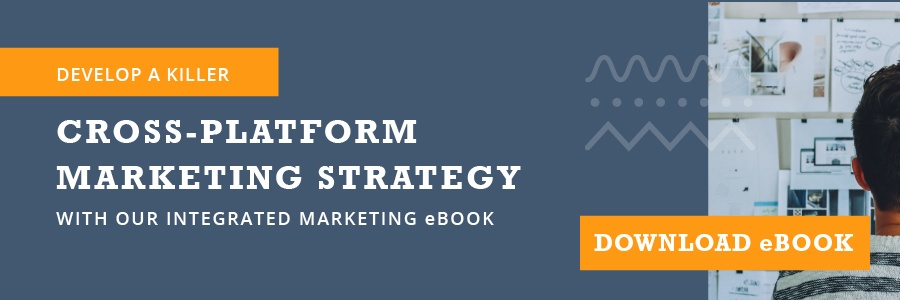
What is inbound marketing and what are the advantages of combining the inbound methodology with your digital and traditional marketing campaigns to increase your ROI?
In the current digital environment, the process of advertising and closing sales has become far more consumer-centric, with personalisation becoming the norm and consumer brand-evangelism the goal. But how can you make these requirements work for you?
The key is to combine both traditional marketing efforts with an inbound marketing strategy to achieve your required results and, in turn, increase your ROI. Traditional media is any marketing effort existing offline and includes television, radio, magazines and billboards.
According to HubSpot, “...traditional outbound marketing and inbound marketing can co-exist. HubSpot’s CEO Brian Halligan believes marketers should spend 90% of their efforts on inbound marketing and 10% on outbound marketing. So, step back and evaluate which methodology currently dominates your marketing strategy.”
What is inbound marketing?
Inbound marketing focuses on attracting potential buyers with meaningful content and converting them to customers. Traditional marketing interrupts your target market whereas the inbound methodology creates meaningful experiences by using engaging and interactive content.
But, what are the benefits of combining traditional marketing with inbound marketing efforts?
According to Digital Agency Network, a global digital agency, “digital marketing has introduced many different strategies and tactics, besides being much faster and more efficient than the traditional one. But, to say that traditional marketing is dead or dying out is simply wrong, as many traditional marketing methods still have the power to win over people.”
- Reach different target audiences
Choose the right platform for your audience when targeting them. Digital marketing allows you to reach a wider audience, whereas traditional marketing limits your targeting to specific publications, locations, radio stations, etc.
- Create brand awareness
To take full advantage of the publicity, it’s best to combine both your offline and online marketing efforts to achieve the desired outcome.
- Sell your products and services
When you run your marketing efforts, whether traditional or inbound, prospects pick up on the type of language used to promote your product and service. As a result, you will reach more customers and increase your overall ROI.
Examples of using inbound marketing in a traditional environment
Square 2 Marketing gives us a great example of how you can use these principles to increase the effectiveness of your traditional advertising, in their blog post, ‘Inbound Marketing Coexists with Traditional Marketing too’.
Read the blog on how Danone’s Oikos yoghurt brand went out of their way to know who they were targeting, what the consumer wanted, and how to attract consumers using a content-marketing-style approach.

In 2014, Always, a feminine hygiene product launched a campaign, #LikeAGirl with videos highlighting a debate around gender equality. They successfully used online ads, YouTube videos, direct marketing and brand activations to give all viewers or potential customers an unforgettable and thought-provoking experience.
<Insert YouTube video - #LikeAGirl>
According to Always, “Categorizing messages by their content enabled us to understand engagement with the brand and social issues. In the case of the #likeagirl campaign; we’re not just measuring an ad campaign, we’re also looking at discussions of equality and empowerment. We can do this sort of analysis with any kind of social media or other text data but tweets are especially handy and offer a better demographic representation than most other social networks so that’s what we’ll focus on here.”
<Read the Suzuki Ertiga Integrated Marketing Case Study here>
Why is this so important?
Product sales now depend on a vastly broader set of variables, which have been brought about by the digital marketing boom, as well as the change in consumer behaviours that come with it.
How do you stay ahead of the competition in an environment where your product could easily become a casualty of low brand loyalty?
Use content-marketing principles in your traditional approach:
- Focus entirely on the customer – their needs, wants, location, and history – to target and provide the right information.
- Ensure your content is presented in the right context.
- Analyse your results to optimise your campaigns.
How do you measure success?
Proof, an online B2B sales company says, “Calculating the ROI of a company’s marketing efforts enables marketers and analysts to justify current marketing spend, while also positing where financial resources should be allocated going forward. If a marketer is able to accurately measure and understand how their marketing ROI is impacting revenue, then they’ll be able to validate marketing investment choices at an executive level.“

When measuring the success of a marketing campaign, you need to ask yourself a few questions, like:
- What are your goals and objectives?
- What does success mean for your business?
- What makes your marketing campaign stand out from the rest of the crowd?
- What metrics do you have in place to measure success?
Make informed decisions with an inbound marketing strategy
By constantly gathering data on your contacts and customers, you’ll be able to access insights like:
- Which digital platforms convert best into new customers
- Which traditional campaigns resulted in the most leads/sales/revenue
- How long the average sales cycle is per medium
- Where you should invest more of your time, resources and budget to drive sales
-3.png?width=655&name=pasted%20image%200%20(1)-3.png)
The benefits of outsourcing your marketing efforts
Do you want to implement an integrated marketing strategy? The key is to run your business and outsource your marketing efforts to an experienced agency. Your outsourced agency is always a step ahead of you and they know exactly how to fulfil your needs and grow your business while also improving your bottom line.
To gain more insights on consumer behaviour, and where you can engage on the consumer journey, download our Integrated Marketing eBook below:
Get your copy of the Integrated Marketing eBook




SUBMIT YOUR COMMENT